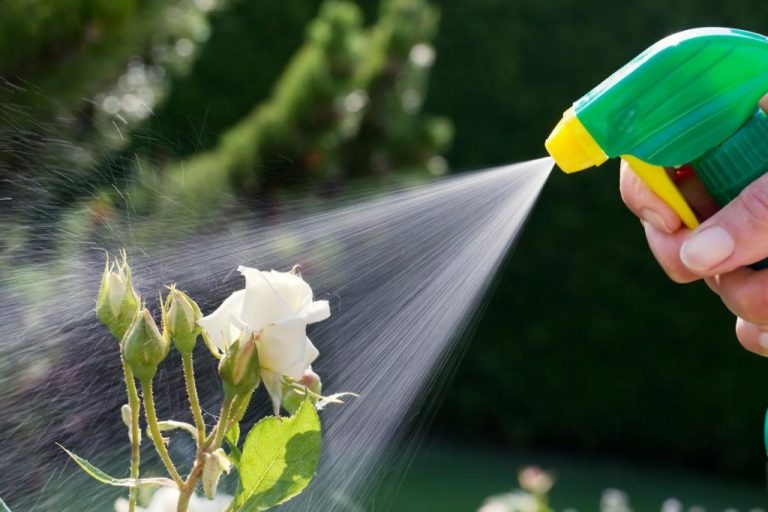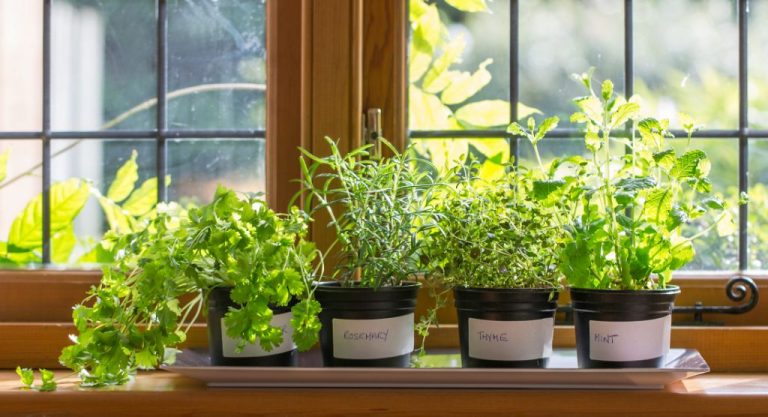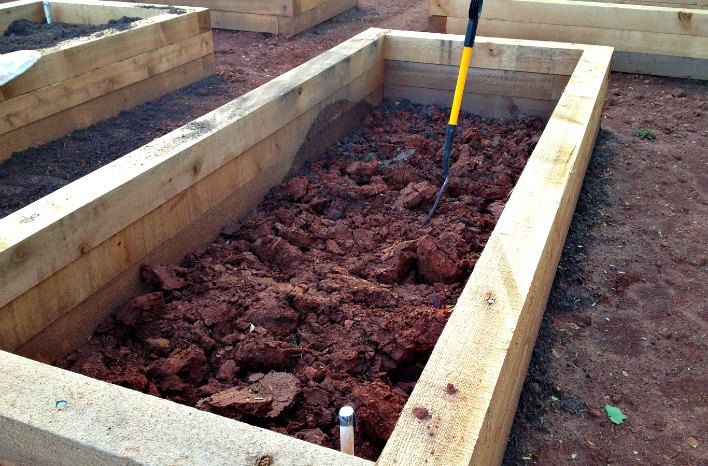Organic Vertical Gardening: Growing Up For Space-Saving Harvests
Vertical gardening, also known as vertical farming, is the practice of growing plants upwards vertically rather than horizontally across the ground. This agricultural technique allows for more efficient use of limited gardening space by stacking plants vertically, leading to higher yields in a smaller footprint. Vertical gardens can utilize trellises, walls, fences, poles, containers, and racks to train climbing vegetables and trailing plants to grow upwards.
Vertical gardening offers many benefits compared to traditional row gardening:
- Maximizes growing space – By stacking plants, a small garden can produce as much as a large field (1). Vertical farming “makes it possible to increase food production per square foot” (2).
- Higher yields – Vertical gardens can increase crop yields per square foot since plants are grown closer together and supported to maximize light absorption.
- Uses less water – Vertical setups often integrate efficient irrigation systems which recycle and reuse water.
- Less weeding and pest management – Elevated beds prevent weeds and raised plants have less pest pressure.
- Extends growing season – Warm air rising along vertical structures protects plants from frost.
- Less bending and kneeling – Vertical gardens bring plants to a higher and more accessible level.
Sources:
(1) https://www.conserve-energy-future.com/benefits-vertical-garden.php
(2) https://www.planetnatural.com/10-benefits-of-vertical-gardening/
Choosing a Vertical Setup
When it comes to vertical gardening, there are many structures you can use to maximize your growing space. Here are some of the most popular vertical setups:

Trellises – Trellises are lightweight structures made of wood, metal, or plastic that can be leaned against a wall or fence. Plants like pole beans, cucumbers, tomatoes, and grapes can be trained to grow up a trellis. See this guide for more trellis ideas.
Walls – You can transform a blank wall into a vertical garden using shelves, stacked pots, or special wall planters. This works well for herbs, leafy greens, strawberries, and cascading flowers. Attach planters securely and provide good drainage.
Stacked pots – Pots, buckets, or containers stacked on steps, stands, or tiered shelving makes an easy vertical garden. Go for at least 6 inches between pots for good air circulation. This can work for any type of vegetable or flower.
Cages – Vining crops like cucumbers, melons, peas, and beans thrive when grown vertically on cages instead of sprawling on the ground. Use sturdy wire cages or build your own from fencing.
Poles – Tall poles or stakes inserted into pots let you grow vining vegetables upright. Best for pole beans, peas, and climbing flowers like morning glories.
Ideal Vegetables and Herbs
Certain vegetables and herbs are well-suited for vertical gardening given their vining or climbing growth habits. Some top choices include:
Tomatoes – Tomatoes thrive when supported vertically with cages or trellises. This improves air circulation and prevents disease. Indeterminate tomato varieties will keep growing and producing all season long in a vertical garden.1
Cucumbers – Cucumbers naturally vine and spread out. Growing them vertically on a trellis produces straighter, healthier cucumbers that are easier to harvest.1
Peas – Pea plants need support to climb and grab onto with their tendrils. A vertical garden provides the perfect trellising structure for peas to wrap around and grow upwards.2
Lettuce – Loose leaf lettuce varieties are ideal for growing vertically. The leaves remain loose and open at maturity for easy harvesting.2
Herbs – Many herbs like mint, oregano, thyme and rosemary grow well in vertical gardens. Their trailing growth habits are perfect for cascading over the edges.2
Soil, Fertilizers and Watering
One of the most important elements of a successful vertical garden is providing the right type of nutrient-dense soil to encourage plant growth. According to Commercial Richgro (n.d.), https://commercial.richgro.com.au/news/soil-requirements-for-growing-vertical-gardens/, the soil should be lightweight and have good drainage and aeration to prevent soil compaction.
Using an organic potting mix or high-quality compost is ideal, as it will contain nutrients from decomposed plant and animal materials without chemical fertilizers. The soil should retain moisture but not get waterlogged. Adding materials like perlite, vermiculite, coconut coir, or bark can improve drainage in regular potting soil.
Fertilizing with organic options like compost tea, fish emulsion, or kelp extract provides nutrients without chemicals. Feed plants every 2-4 weeks according to label instructions. Overfertilizing can damage plants, so follow recommendations.
Proper watering is also essential. Drip irrigation systems or hand watering ensuring the entire soil area gets damp are good options. Allow the soil to partially dry out between waterings to prevent root rot. The needs will vary based on climate, plant types, and sunlight exposure.
Sunlight and Location
When setting up a vertical garden, sunlight is one of the most important considerations. Most vegetables and herbs need at least 6 hours of direct sunlight per day in order to grow and produce well (Source: https://memphisareamastergardeners.org/vertical-gardening-for-beginners/). Position your vertical garden in a spot that receives full sun for a good portion of the day.
Southern exposures are ideal, as they receive sunlight for many hours. East or west-facing walls can also work. Just be aware that plants on a west-facing wall may need extra watering in hot climates since they receive harsh afternoon sun. If only a north-facing spot is available, focus on growing herbs and leafy greens that can tolerate partial shade.
In terms of location, outdoor vertical gardens can be attached to exterior walls, fences, posts and more. Make sure the structure is sturdy enough to hold the weight when fully planted and watered. For indoor vertical gardens, place them near bright windows but not directly touching cold glass.
Consider sunlight patterns when choosing which plants go where in a vertical garden. Position sun-lovers on the higher and more exposed areas. Reserve the lower and more protected spots for shade-tolerant varieties.
Pest Control and Disease
Growing plants vertically in compact spaces can make them more susceptible to pests and diseases. Common pests that affect vertical gardens include aphids, whiteflies, spider mites, mealybugs, fungus gnats, and thrips. Prevention starts with proper site selection and maintenance. Choose a sunny, well-ventilated area and avoid overcrowding plants. Remove any dying leaves or debris around plants that can harbor pests. Monitor plants frequently for any signs of infestation. At the first sight, remove affected parts immediately. For organic treatment, insecticidal soaps, neem oil, and microbial insecticides using Bacillus thuringiensis can control most soft-bodied insects without harming beneficials.
Diseases like powdery mildew, botrytis, and other fungal or bacterial problems can spread quickly in vertical gardens. Allow for good air circulation between plants. Water early in the day so foliage dries by night. Remove any infected plant material and avoid overhead watering. For treatment, copper-based fungicides and bicarbonate products can help manage diseases organically.
Pollination Needs
Pollinators like bees, butterflies, hummingbirds and bats play an essential role in a productive vertical garden. Since vertical gardens utilize a smaller footprint, it’s important to intentionally attract pollinators for good fruit and vegetable yields.
There are several strategies to bring pollinators to a vertical garden setup:
- Plant flowering herbs like lavender, thyme, oregano and basil. Their blossoms will entice pollinators. (https://www.beeculture.com/urban-plantings/)
- Include native flowering plants that provide nectar for bees and butterflies. Good options are milkweed, coneflowers, and sunflowers. (https://www.coohom.com/article/the-beauty-of-sun-loving-plants-in-vertical-gardening-and-pollinator-gardens)
- Situate the vertical garden near pollinator-friendly landscaping to increase visits.
- Provide water in a shallow dish with stones for butterflies, bees and hummingbirds.
- Avoid pesticides which can harm pollinators.
With some strategic planning, a vertical garden can flourish with helpful pollinators supporting plentiful harvests.
Harvesting and Maintenance
One of the main advantages of vertical gardening is easier harvesting. When crops are grown at waist or eye level, there’s no bending, kneeling, or using ladders to access ripe vegetables and herbs. Pay attention to individual plant maturity times and harvest accordingly. Leafy greens like kale, lettuce, and spinach can be continually harvested by pinching off outer leaves while allowing the plant to keep producing from the center. Herbs like basil and cilantro should have leaves selectively picked so the plant remains healthy.
Fruiting crops like tomatoes, cucumbers, beans, and peas can be picked when fully ripe and vines can be pruned periodically to stimulate new growth. According to Harvest to Table, staking climbers like tomatoes and cucumbers helps improve air circulation and sunlight exposure for better quality fruit.
Regular pruning of overgrowth keeps plants tidy and removes dying leaves or stems. Wipe down tower surfaces periodically to prevent disease buildup. Remove spent annual plants after final harvests. Replenish potting mix each season for best results. With a well-designed vertical garden, maintenance is minimal and allows for bountiful, easy access harvests all season long.
Choosing Plants
When choosing plants for a vertical garden, companion planting is an important consideration. Certain plants grow well together and provide mutual benefits like pest control, enhanced flavor, and improved pollination when planted near each other. Some classic companion plant pairings for vertical gardens include:
- Tomatoes, borage, and marigolds – Borage strengthens tomato plants and deters pests like hornworms. Marigolds repel nematodes.
- Lettuce, carrots, onions – Onions and carrots mask the scent of lettuce to keep pests away.
- Beans, cabbage – Beans provide nitrogen to cabbage.
- Radishes, spinach – Radishes deter cucumber beetles from attacking spinach.
Crop rotations are also critical in vertical gardening. To avoid depleting soil nutrients, plant families should be rotated each season. Some examples of plant families that shouldn’t follow each other are:
- Nightshades (tomatoes, peppers, eggplant) followed by cucurbits (cucumbers, squash, melons)
- Brassicas (cabbage, kale, broccoli) followed by legumes (beans, peas)
- Alliums (onions, shallots, leeks) followed by amaranths (spinach, beets)
When planning a vertical garden, research compatible companion plants and ideal crop rotations for the vegetables you want to grow. This will lead to healthier, more productive plants.
Sources:
https://www.hortmag.com/edible-gardening/companion-planting-intercropping-vertical-garden-project
Conclusion
Vertical gardening can maximize your harvests while minimizing the amount of space needed. By growing upwards instead of outwards, it makes efficient use of small areas and allows you to reap a bountiful crop. This method offers many advantages but does require some special considerations during setup and maintenance.
The ideal vertical garden has sturdy vertical supports, appropriate soil and fertilizer, sufficient sunlight and pollination, and is planted with vegetables and herbs well-suited to vertical cultivation. Proper watering, pest control, and harvesting are also key for success. By choosing the right plants, structures, and care regimen, your vertical garden can thrive and provide a delightful space-saving harvest year after year.
The concluding takeaways are that vertical gardening allows urban and space-constrained gardeners to maximize yields. With smart setup and care, even the smallest outdoor areas or balconies can become abundant little orchards. The vertical growing method makes gardening accessible and satisfying for many who are short on square footage. Follow the tips covered to create your own thriving vertical garden that reaches for the sky.




